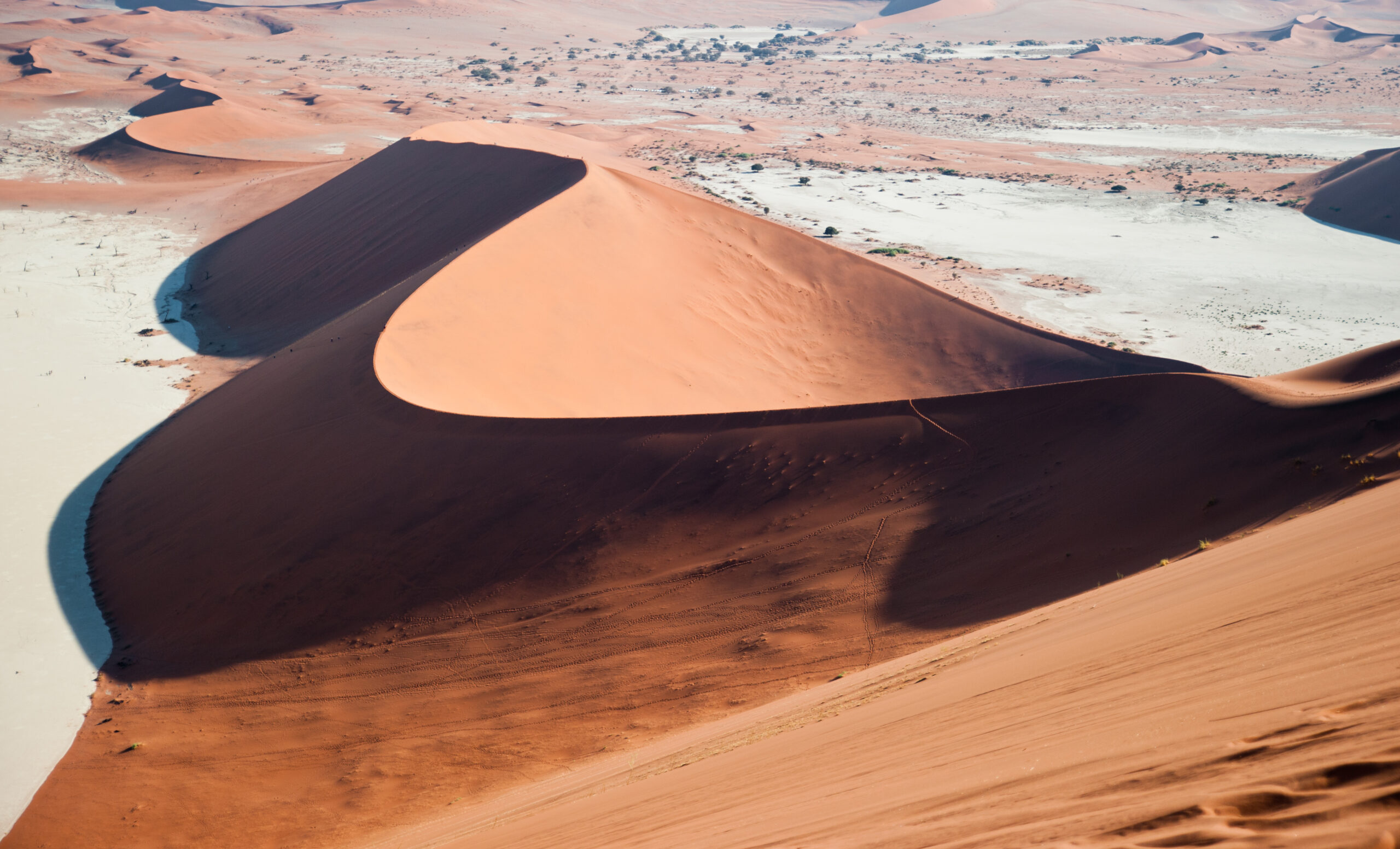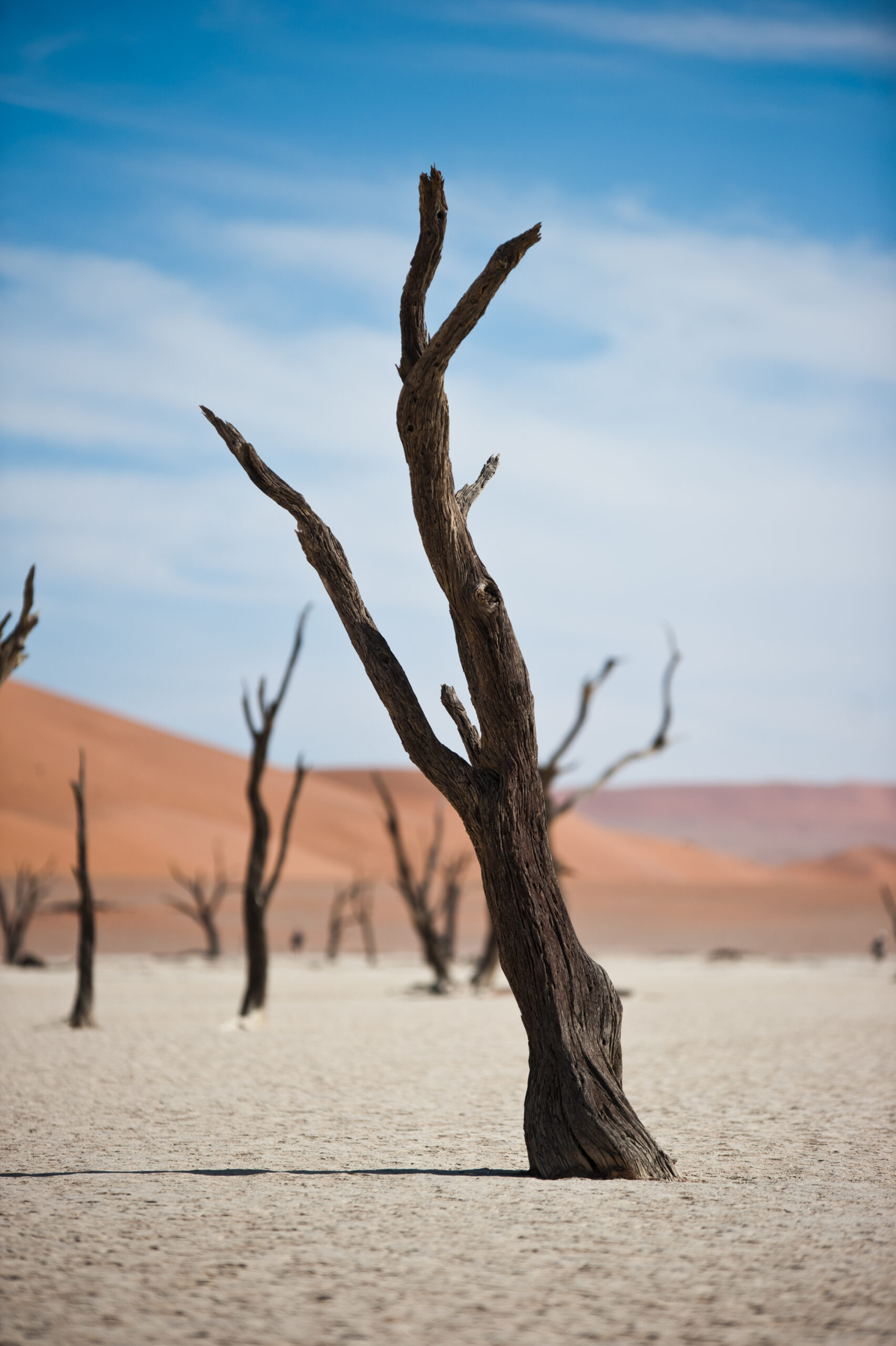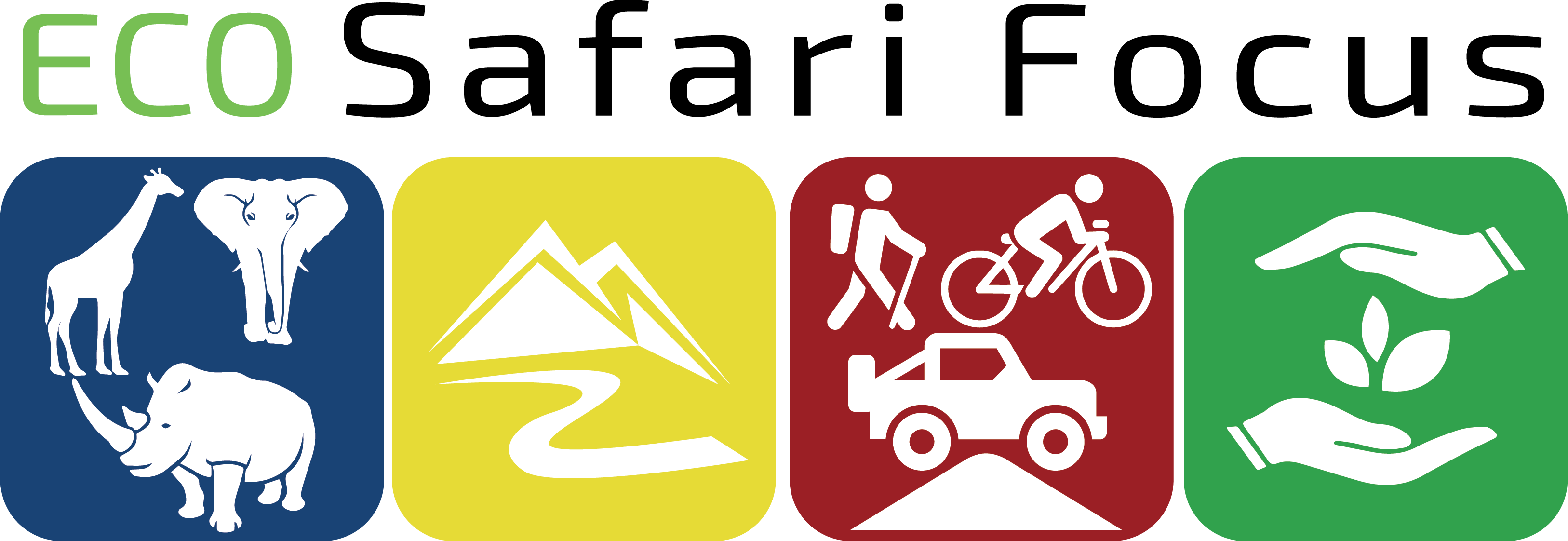Geography and Climate
Sossusvlei (sometimes written Sossus Vlei) is a salt and clay pan surrounded by high red dunes, located in the southern part of the Namib Desert, in the Namib-Naukluft National Park of Namibia. The name “Sossusvlei” is often used in an extended meaning to refer to the surrounding area (including other neighbouring vleis such as Deadvlei and other high dunes), which is one of the major visitor attractions of Namibia.
The name “Sossusvlei” is of mixed origin and roughly means “dead-end marsh”. Vlei is the Afrikaans word for “marsh”, while “sossus” is Nama for “no return” or “dead end”. Sossusvlei owes this name to the fact that it is an endorheic drainage basin (i.e., a drainage basin without outflows) for the ephemeral Tsauchab River.


Plants and Animals
The Sossusvlei area belongs to a wider region of southern Namib with homogeneous features (about 32.000 km²) extending between rivers Koichab and Kuiseb.
This area is characterized by high sand dunes of vivid pink-to-orange color, an indication of a high concentration of iron in the sand and consequent oxidation processes. The oldest dunes are those of a more intense reddish color. These dunes are among the highest in the world; many of them are above 200 metres, the highest being the one nicknamed Big Daddy, about 325 metres high, however the highest dune in the Namib Desert, Dune 7, is about 388 metres high.
Traces in the sand, left by insects and other small animals
The highest and more stable dunes are partially covered with a relatively rich vegetation, which is mainly watered by a number of underground and ephemeral rivers that seasonally flood the pans, creating marshes that are locally known as vlei; when dry, these pans look almost white in color, due to the high concentration of salt. Another relevant source of water for Sossusvlei is the humidity brought by the daily morning fogs that enter the desert from the Atlantic Ocean.
Fauna in the Sossusvlei area is relatively rich. It mostly comprises small animals that can survive with little water, including a number of arthropods, small reptiles and small mammalians such as rodents or jackals); bigger animals include antelopes (mainly oryxes and springboks) and ostriches. During the flood season, several migrant bird species appear along the marshes and rivers. Much of the Sossusvlei and Namib fauna is endemic and highly adapted to the specific features of the Namib. Most notably, fog beetles such as the Namib Desert Beetle have developed a technique for collecting water from early morning fogs through the bumps in their back.
